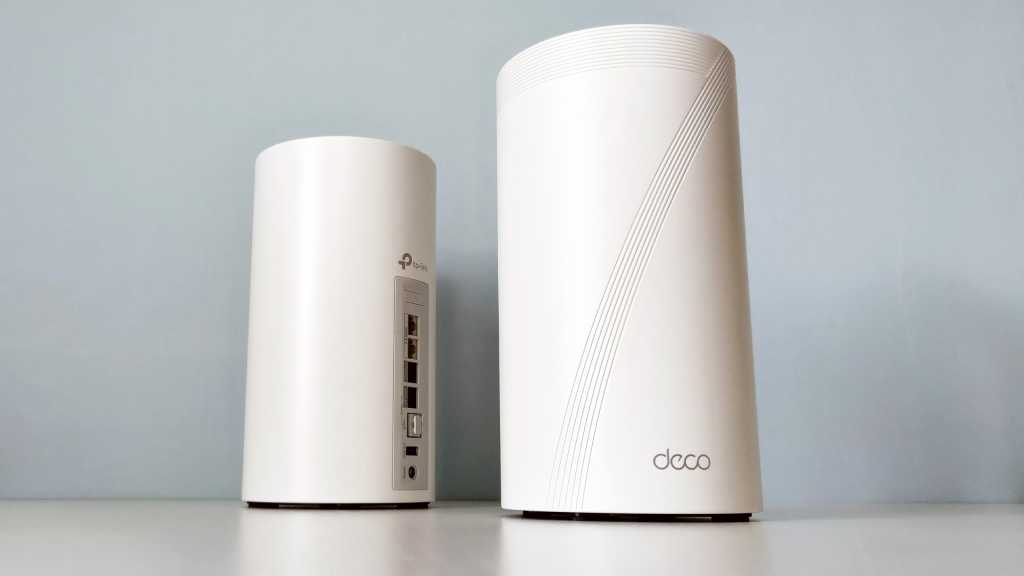Expert’s Rating
Pros
- Great potential with powerful wifi 7
- Fast fixed network
- Easy to install and maintain
- USB for file server
Cons
- Doesn’t quite reach ideal Ethernet speed
- Some functionality costs extra
- Expensive if you don’t immediately need WiFi 7
Our Verdict
It costs more, but not much more than a powerful Wi-Fi 6e mesh. And for those who want to be early adopters of future technology, TP-Link’s easy-to-use mesh is a good investment. It shows what Wi-Fi 7 can do, even if real-life performance doesn’t quite match lab tests. Most of us can wait and see, though. There are more trains coming.
Price When Reviewed
$999 (2-pack) | $1499 (3-pack)
Best Prices Today: TP-link Deco BE85
$999.99
Wi-Fi 7 has been talked about for a long time already, but the new standard is finally here in real products. It started with smartphones. Models including the Oneplus 11, Xiaomi 13 Pro, Motorola Edge 40 Pro and Asus Zenfone 10 are all listed as “Wi-Fi 7 ready”. This means they have hardware support for the 6GHz band for Wi-Fi 6e, but are waiting for a system update before full Wi-Fi 7 support can be enabled. There are still no laptops with Wi-Fi 7 or wireless network cards for PCs.
TP-Link is the first manufacturer to start selling a Wi-Fi 7 router in the form of the Deco BE85 mesh system. It consists of two massive units, tall and thick white cylinders, the size of a fat roll of kitchen paper, and much heavier. Which one you plug in as the main router and which one becomes the extension node is entirely up to you, they are completely identical.
They are based on the same Deco platform as all TP-Link mesh routers, and are easily installed and controlled with the same mobile app. You should also be able to connect other Deco devices to the same network, but with limited performance.
The Deco BE85 is available in a two-pack for $999 from Amazon / £1099 from Amazon UK and can also be purchased as a standalone unit for half the price. In the US you can buy a three-pack for a wallet-bashing $1500, but in an ordinary house you shouldn’t need more than the two-pack.
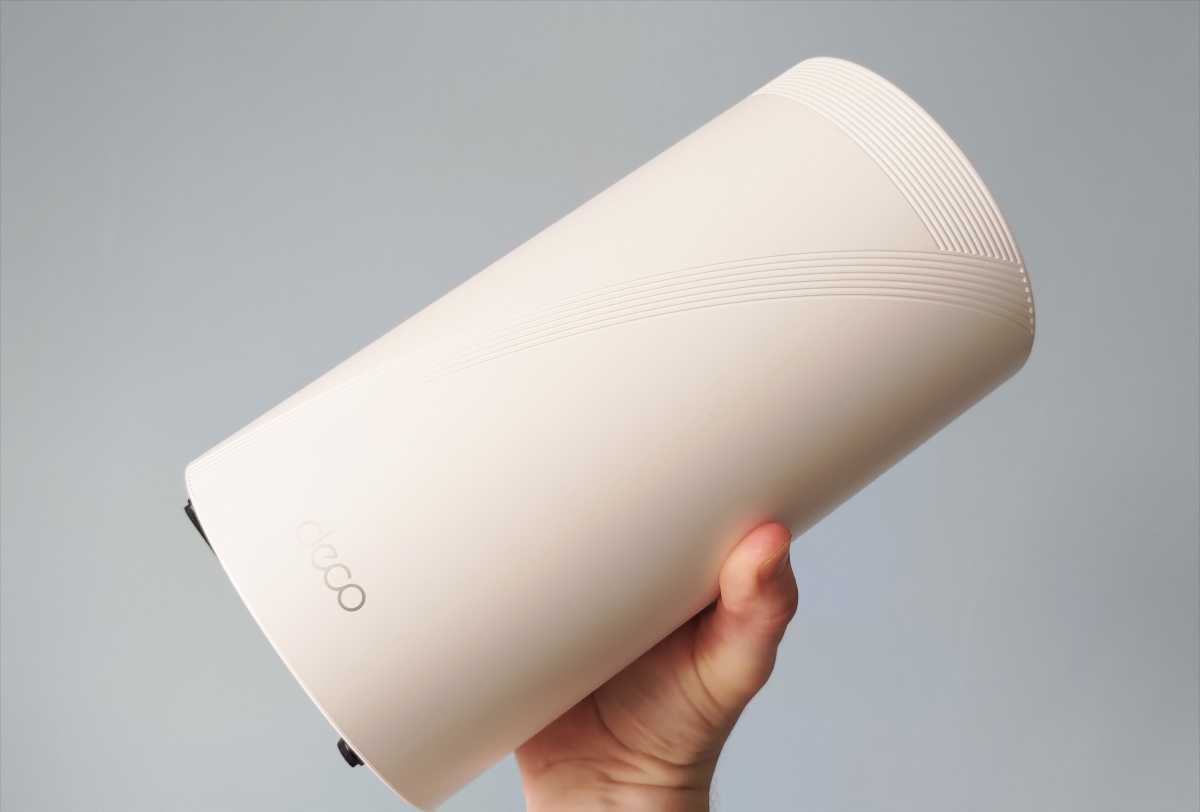
Mattias Inghe
A challenge to test
I have been testing the BE85 for a week or so. Or trying to. Since I don’t have any Wi-Fi 7 clients to connect, it has been difficult to run any performance tests. I have had access to a Xiaomi 13 Pro that is supposed to be updated to Wi-Fi 7, but you never get full performance from a mobile phone, as they have compact design and energy saving, and thus do not fully exploit all the possibilities of the technology.
On the back is a row of four Ethernet ports, two with 10Gbps speeds and two with 2.5Gbps. They are all automatically assigned as WAN or LAN, so you can connect your broadband connection to any of them. Then there’s an SFP+ port. This is an alternative network interface for high speeds, up to 400Gbps. In the Deco BE85, however, there is a 10Gbps speed on it as well, and it is combined with one of the 10Gbps Ethernet ports. So you can use one or the other.
Setting up the router is pretty easy. You plug it in and launch TP-Link’s Deco mobile app. It first gives you confusing instructions on how to connect a cable modem, and there’s no option for fibre in the wall. But I plugged everything in and waited. After choosing a couple of passwords, everything was up and running and working properly. The second unit just needs to be plugged in. It’s pre-paired and detected in a couple of minutes.
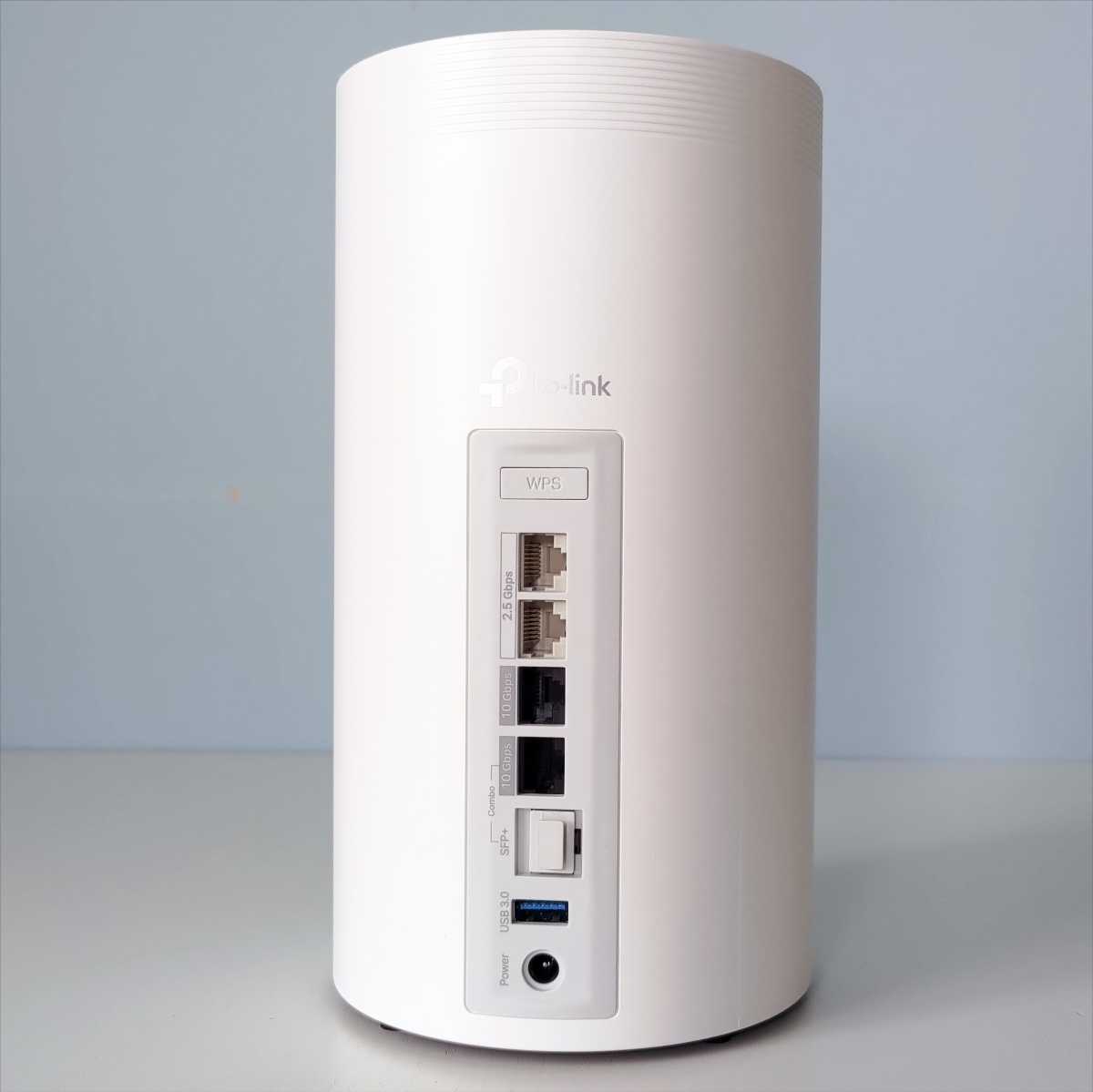
Mattias Inghe
Many new features in Wi-Fi 7
To begin with, let’s clear up some basic concepts about Wi-Fi 7. The new standard can potentially increase the speed of your local network several times over, with transmission speed between clients and the router being in the multi-gigabit-per-second territory. This will enable new heavy-duty applications like 8K video streaming, VR and AR experiences and huge data dumps.
This is done in three main ways. First, there are triple frequency bands: 2.4 GHz, 5 GHz and 6 GHz. This was already introduced a couple of years ago with Wi-Fi 6e, but without the other improvements that Wi-Fi 7 also has. New in Wi-Fi 7 is also that you can use all three bands simultaneously instead of your receiver (such as a phone or laptop) using just one of them.
Second, you also get increased channel bandwidth from 160 to 320 MHz, which almost, but not quite, doubles the speed if receivers also support it. It’s one of those things that not all mobile devices with Wi-Fi 7 do fully. If we then add improved signal modulation, 4k QAM instead of 1024 QAM, data transmission should be about 20 percent more efficient, the result is a doubling of bandwidth per data stream compared to Wi-Fi 6e.
This is why Wi-Fi 7 should be game-changer.
A lot of bandwidth, on paper
Finally, you can run up to 16 simultaneous streams, instead of the previous eight. With all this, the theoretical maximum bandwidth goes from 9.6Gbps for Wi-Fi 6e to – hold on to your hat – 46Gbps. These are theoretical maximums in absolutely perfect conditions. What your router and gadgets can do in real-world conditions is another matter.
The EU-approved version of the Deco BE85 is claimed to deliver up to 19 Gbps with 12 data streams. TP-Link lists the bandwidth as 11.5Gbps at 6 GHz, 5.8Gbps at 5GHz and 1.4Gbps at 2.4GHz. With only one smartphone as a Wi-Fi 7 client, this is not something I have been able to confirm in tests. But it is absolutely possible: I clocked speeds of up to 1.6Gbps in single tests, at a short distance connected to 6GHz.
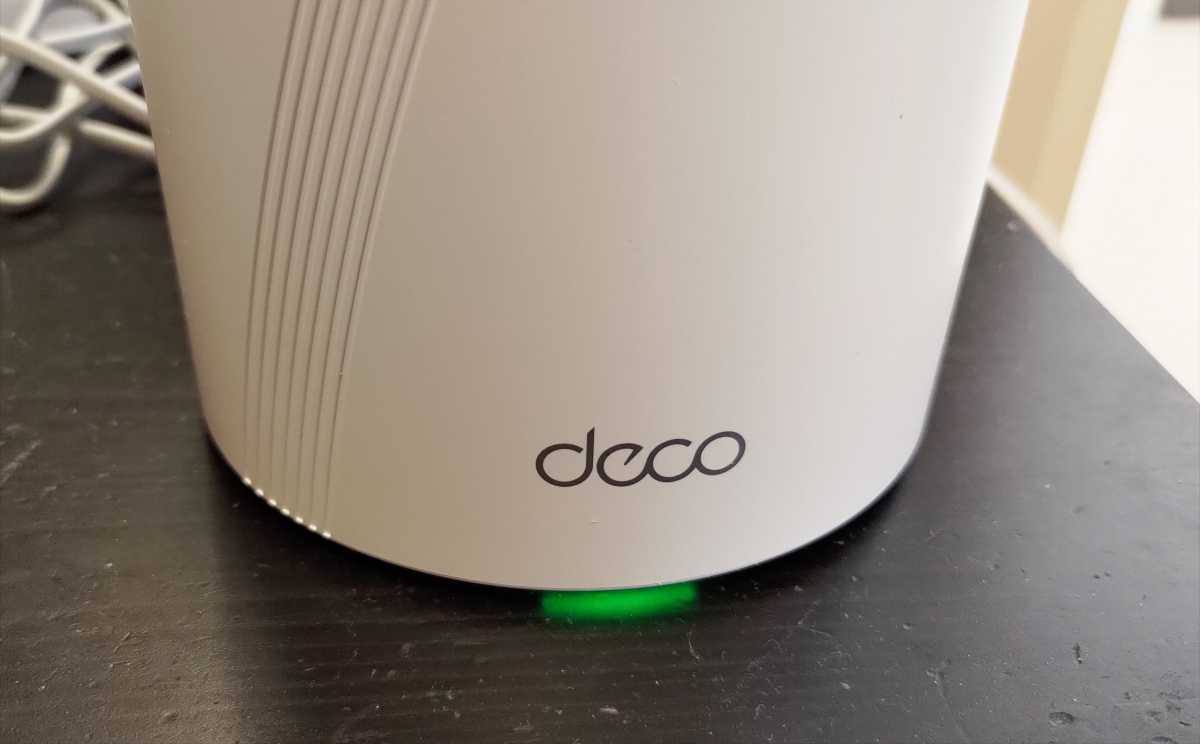
Mattias Inghe
However, it is the fastest I have seen wirelessly between a router and a single mobile device. Even when I connect other mobiles and computers with Wi-Fi 6 or Wi-Fi 6e to the Deco BE85 I got very good speeds, right around Gigabit level. And it’s hard to complain about that.
You shouldn’t expect multi-gigabit speeds for all your future Wi-Fi 7-compatible mobiles and computers, but as always, Wi-Fi bandwidth is about how much space all the connected devices, and mesh nodes, have to share.
Performance
- 3m to Wi-Fi client: 1471Mbps (6GHz Wi-Fi 7), 1003Mbps (6GHz Wi-Fi 6e)
- Speed, backhaul between nodes, 7m: 5721Mbps
I tested connecting one desktop PC to the main router and another to the satellite node, both with 10Gb fixed networks, and measured the speed between them. This is the best I can set up to measure the speed over the Deco BE85’s backhaul, i.e. the communication between the nodes. Here it’s full Wi-Fi 7, with 320 MHz channel width and combined frequency bands.
Will I hit the network card’s claimed 10Gbps ceiling? No, the best result was just under 6Gbps, with a clear line-of-sight view and about seven metres between mesh units. Whether this is due to speed limitations in the Ethernet in one of the computers, in the router or that it is not faster wirelessly over backhaul, I can’t say for sure with my test equipment.
I’m guessing it’s Ethernet limitations, as I get about the same speed if I connect a network cable between the nodes and test using wired backhaul instead. Is this important to know? Maybe if you work professionally with networks and really care about optimising. If you just want something that gives you stable multi-gig speeds in your home and covers your needs by a wide margin, this is it. Or, at least, it is your only option right now.
One way to utilise these speeds is with a fast SSD connected as a local file server. The nodes have a USB 3 port, which is rare to see in a mesh package. You can set up file servers on SMB or FTP, and even run Time Machine if you have a Mac. The USB port does not appear to have any other features, such as the ability to connect and share printers.
Not for everyone at the moment
These are numbers that are hard to get a handle on, especially since most of us don’t have a broadband connection faster than 1Gbps. And most people would dearly love even that.
And what we do daily doesn’t need such speeds. Very few 4K TVs support even Wi-Fi 6. But there are a few lucky people with up to 10Gbps connections. For example, internet provider Bahnhof, an early adopter of high-speed fibre to consumers, is offering the Deco BE85 to its subscribers.
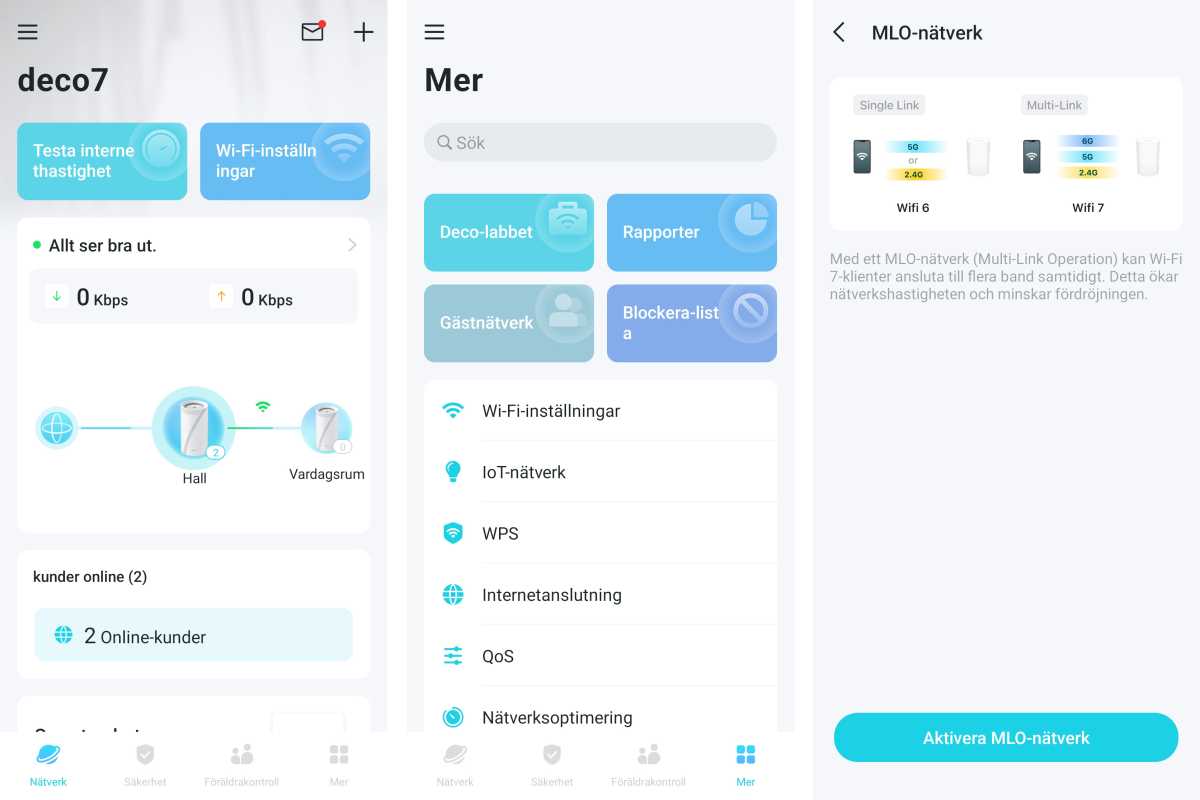
PC för Alla
So why do you need a Wi-Fi 7 router today if you have only a 1Gbps broadband connection? First, to invest for the future. Higher speeds are coming, so it can be a good investment to be prepared. The question here is whether it’s coming this year, next year, or in 5 to 10 years where you live. You’ll have to ask your broadband provider, but don’t expect a definite answer. And maybe there are good reasons to wait. In a few years, Wi-Fi 7 routers will be smaller, more discreet, and cheaper. So why pay high early adopter prices now?
In fact, for a selection of more affordable options, see our roundup of the best mesh Wi-Fi systems.
The range between nodes is harder to judge. Because it runs a combination of frequency bands, even long-range 2.4 GHz is fast, so it’s possible to get good speeds over long distances. If your ambition is not to have several gigabits of capacity throughout your home, but to settle for less, you won’t need more than two units even in a larger home.
Expandable features
Other than high speeds over both wired and wireless connections, I didn’t encounter any surprises with the Deco BE85. It works like any other mesh system. TP-Link’s app gives you basic control over network and Wi-Fi settings, but it lacks some detailed control for those who want to fine-tune their network. For some things, like channel selection, you’ll have to rely on the router’s automation. But you can access the essentials, from port forwarding and address reservations, to QoS settings and Wi-Fi security.
You manage everything from the app, but the router has a web interface that only contains status and network information, as well as the ability to reboot devices or upgrade firmware. There’s also a simple guest network function, basic parental controls, media content filters, and a surf/sleep schedule. This can be upgraded to more detailed control for a fee.
Similarly, there’s an extended security layer you can buy with intrusion protection and router-level blocking of malicious websites. It also provides protection against attacks on your connected smart home devices.
But these are not things you absolutely need. If you have a good security package for your gadgets already, you can avoid the extra cost. This is still a feature-rich, powerful and stable mesh system, which is fully backwards compatible and gives you plenty of performance even if you don’t have a house full of Wi-Fi 7 stuff. Yet. It’s a promising start for Wi-Fi 7, but whether the Deco BE85 is the best Wi-Fi 7 mesh or Wi-Fi 7 router you can buy once you need it remains to be seen.
Specifications
- Wireless protocols: Wi-Fi 7
- Frequency band: 2.4 GHz + 5 GHz + 6 GHz
- Wi-Fi capacity: 1376 + 5760 + 11520 Mbit/s
- Connections: 2 x 10 gigabit ethernet wan/lan, 2 x 2.6 gigabit ethernet wan/lan, sfp+, usb 3 type a
- Wireless security: Wpa2, wpa3
- File server/write server: Yes/No
- Other: Guest network, parental control, QoS, Time Machine support, IoT network, Security+ (virus protection and extended intrusion protection) as an option.
- User interface: Web, app
- Remote administration: Via app
- Dimensions: 128 × 128 × 236 mm
This review originally appeared in Swedish on PC for Älla.
